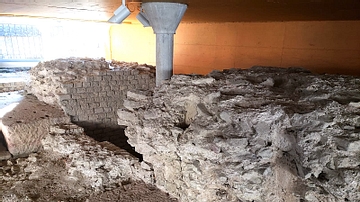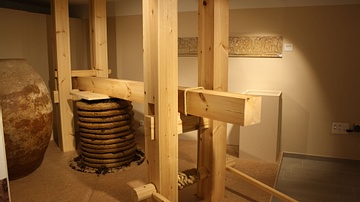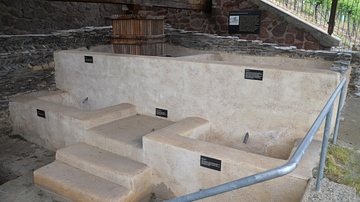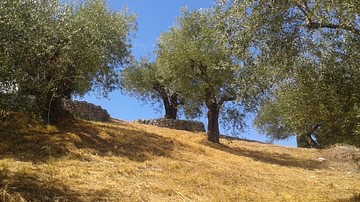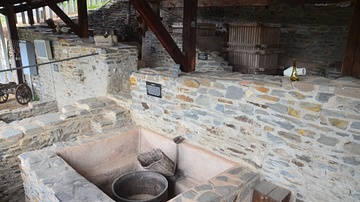Illustration
A Roman stone olive press known as a trapetum. From Pompeii. The device consisted of a large stone bowl (mortarium) into which the olives were poured and then crushed under two concave stones (orbes) attached to a central beam (cupa) fixed to an iron pivot (columella). This apparatus then slotted onto a central post (miliarium) set into the bowl which allowed the stones to be turned inside it.
Cite This Work
APA Style
Lücking, H. (2016, September 08). Trapetum Roman Olive Press. World History Encyclopedia. Retrieved from https://www.worldhistory.org/image/5645/trapetum-roman-olive-press/
Chicago Style
Lücking, Heinz-Josef. "Trapetum Roman Olive Press." World History Encyclopedia. Last modified September 08, 2016. https://www.worldhistory.org/image/5645/trapetum-roman-olive-press/.
MLA Style
Lücking, Heinz-Josef. "Trapetum Roman Olive Press." World History Encyclopedia. World History Encyclopedia, 08 Sep 2016. Web. 13 Apr 2025.



